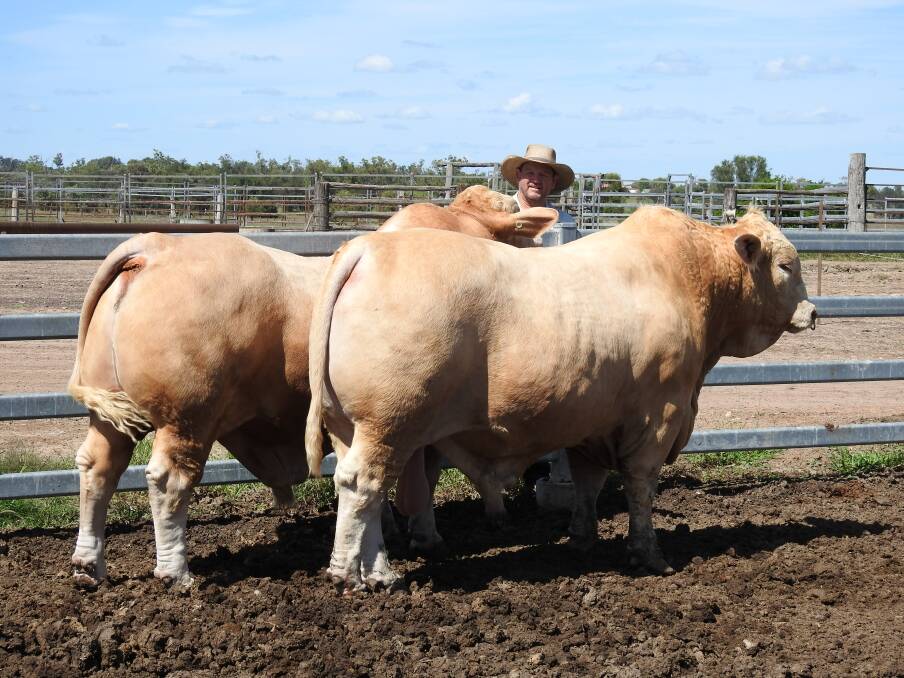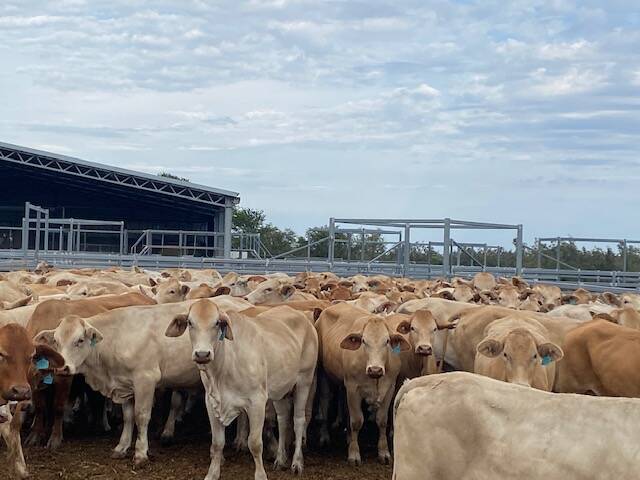Journey to generational bred Charbrays has proven a success

This is branded content for Huntington Charbrays
The Welsh family have been breeding Charbray cattle for the past 40 years and their philosophy behind their stud operation, Huntington Charbrays, is that it's all about the journey.
A journey which is leading them to Rockhampton in May for Beef Week, where they will be displaying a small team of cattle, including five Charbray bulls and two young Charbray females.
The family partnership, located near Taroom, is run by brothers Matt and Luke Welsh, together with their families.
Matt Welsh said his family began breeding bulls in the mid-eighties. They have always enjoyed breeding seedstock and having full control over the article they produce. It's now been more than a decade since they embarked on the next step of their journey; which was to stabilise their Charbray genetics.
"It's taken years of dedication to develop our Charbray herd to where it is now, and we have done this by stabilising our Charbray genetics through generational breeding," Mr Welsh said.
Initially the Welsh's breeding program consisted of a Charolais-Brahman cross, using their own Charolais bulls, however they found that returning to the parent breeds was creating too much variability in the progeny. Instead they have developed a breeding program which focuses on using Charbray bulls back over Charbray cows.
Mr Welsh said their goal was to breed progeny that would maintain high fertility, feed efficiency, possess the good adaptability of the Braham, and certainly the growth rate of the Charolais. He said once they started the generational breeding program, they noticed a better consistency and significant improvement in the fertility, feed efficiency and temperament of their cattle.
"I think the progeny we have today and also the draft heading to Beef Week, will certainly be a great example of what we have achieved."
The Welsh's get a lot of prospective clients looking to buy bulls containing a certain percentage of a breed.
"We always say that cattle don't breed in fractions, we've got to look at the type of animal. For our northern clients we are trying to keep a slicker coat, flatter back, and maintain that muscling and extra growth that are typical traits of the Charbray breed."
"It's a package that combines doing-ability and survivability, that will reproduce, and produce a phenotype that is now a lot more consistent then it's ever been before."

The Welsh's also breed some Charbray bulls in-conjunction with the Pulsford family, on their property, Hamsteads, near Toogoolawah. This allows them to better service their widespread of clients, and breed bulls suited to all environments.
Mr Welsh said they are encouraged by their genetic progress and show success that their program is heading down the right path.
The International Charolais and Charbray society held a world virtual show this year and the results were announced in February. Huntington Charbray enjoyed multiple successes, taking out both Grand Champion and Reserve Champion Charbray bull.
Huntington Charbrays' annual spring bull sale is held at their home property, Carrabah, near Taroom, with a smaller offering in August at the Toogoolawah Showgrounds. Private sales are offered throughout the year.
This is branded content for Huntington Charbrays


